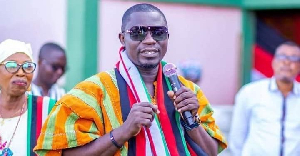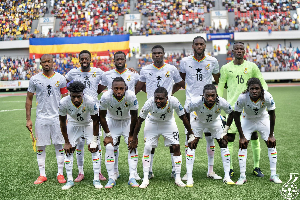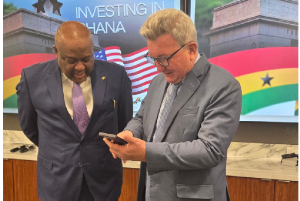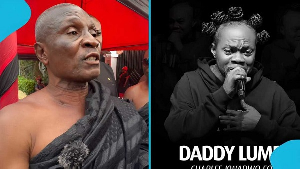GHANA’S AFRO-R&B STAR QWECI AND THE QUESTION OF MUSICAL ARTICULATION
The technical aspects of musical production in Ghana are not up to international standards, so too are serious, glaring technical deficits in some of the native languages some singers and musicians use for their music.
We are here referring to native fluency or proficiency in spoken language—phrasing and accent and diction to be precise—and technical problems in both pitch and musical arrangement, and other complex issues relating to the concepts of consonance and dissonance, to contrary and oblique motions, modulation.
A good example of what we generally mean by technical deficit in musical arrangement is to be found on a powerful hiplife track titled “Odo Esisi Me,” a piece by Faro (featuring Akatakyie). Importantly, this beautiful and catchy song lacks the concept of full voice in certain notable places. The lyrical velocity, of the rap or song, outpaces the beats as soon as the actual rap begins on the track.
To put it simply, there exists a dissonance problem between pitch variation of the rapper, Faro, on the one hand and rhythm, melody, harmony and beat on the other.
In other words, on “Odo Esisi Me” each tried to outdo the other in terms of speed or tempo or, in terms of the volume of increased pitch, thereby creating a dissonance or incongruity of sorts in the final output.
Careful application of musical arrangement techniques, for instance, could have removed those unnecessary pitch incongruities between the voice pitch (es) of the rappers on the one hand and harmony, melody, beat and rhythm on the other.
MORE TECHNICAL ISSUES WITH THE “ODO ASISI ME” TRACK
There are obviously some major breathing-control techniques problems on this highly provocatively danceable tune, a nostalgic song in our opinion.
Here we can authoritatively say Faro, a member of Akatakyie, who rapped on this track was lyrically inexperienced much like D Black and Paedae, of R2bees, are today, in terms of lyrical or vocal delivery techniques, a pardonable technical lapse given that “vernacular rap” was not a well-developed art then as it is today.
Today one cannot but conclude after listening to the rich repertoires of Reggie Rockstone, Edem, Okyeame Kwame, Kofi Kinaata, Guru, Sarkodie, M.anifest, Kwadae, Yaa Pono, E.L., Obrafour, Tinny, Kwaw Kese (“Abodam”) and Wanlov da Kubolor that mastery of lyrical delivery is not in question and that, overall, lyrical delivery has improved significantly across the years. More significantly, the lyrical prowess of Obrafour, Kwadae, M.anifest and Sarkodie is astounding.
Also beat production technology has improved sound quality generally, perhaps the only exception being that hiplife rhythm is still dominated and defined largely by the rhythm of Western hip hop.
Even burgher highlife which introduced an element of rhythmic “decadence” into the “traditional” guitar-driven or –defined sikyi/Yaa Asantewaa environments still retain (ed) a lot of the music sheets of that “traditional” generation of highlife and palm-wine music.
ANOTHER EXAMPLE
The other example is better explained by Ded Buddy’s more recently released single, “Yendi Asa” (Note: the concept of “pure note” is undermined in this song as well as in “Odo Esisi Me).
On the “Yendi Asa” track we find some important problems with enunciation pitch and speed of lyrical delivery, call it vocal glitch if you may, because the singer pronounces certain Twi words in a way that makes him sound as if he is not a native speaker of Twi.
This is not necessarily to imply that one has to have the highest level of native fluency or proficiency in a certain language in order to sing well in that language. This is never true.
Excellent examples of this phenomenon are Onipa Nua, Wulomei, American rapper Ace Wood (who said a couple of Twi words in his duet or collaboration with Sarkodie on the track “New Guy”), Adane Best (an Akan guy who sings so well in Ga), and Samuel Owusu, the focus of this four-part essay.
What are we saying?
For instance, Samuel Owusu has a line in Ga on hardheaded persons on the classic track “Yenka Wo Ntie No,” and this line which has eloquent presence in the larger conceptual framework of the song’s Twi rhetorical orthography loosely or literally translates, “reality will dawn on you some day if you don’t listen to advice,” that clearly points to an Akan singer speaking Ga.
The beauty of the rhetorical arrangement or lyrical structure of the song in question is thus enhanced through an inclusion of language variety—an excellent reason to celebrate ethnic diversity and language variety in our national culture—and smoothness of voice pitch fluidity.
In fact, his voice pitch on this particular track did not appear to have experienced any episode of plastic strain on account of this translational rhetorical orthography.
And yet, though he is someone who also admittedly spoke and still speaks Ga fluently, he still allowed the musical arrangement of beat, melody, harmony and rhythm of that song to play out well, in a sense allowing his translational rhetorical orthography to dictate and calibrate how best he should make his enunciated Ga lines flow seamlessly in tandem or in line with the rest of the music.
These are some of the technical questions that the discipline of vocal pedagogy tries to answer.
On the basis of this fact he did not appear to force, strain or stretch his vocal folds, a situation that would probably have put the song in a dissonance mode.
In doing so, he was able to achieve a level of consonance that made the song and lyrics feel pleasant to a musical ear.
There is a near-perfect musical arrangement with regard to this old classic highlife tune, “Yenka Wo Ntie No.” We cannot say the same of Ded Buddy’s “Yendi Asa,” a beautiful song in and of itself.
Now back to Ded Buddy again:
His timbre or tone quality has deteriorated significantly over the years, a happening that has underwritten the narrowing or de-emphasizing of his tone quality’s elastic potentiation in the practical execution of vocal variation against a complex background of harmony, melody, rhythm and beat.
Clearly, his capacity for manipulating his vocal folds to produce a rich tone quality has been a lingering problem for him, an observation we have not brought to his attention yet.
Thus the point where he has to make good use of vocal variation, for instance by raising his pitch in some instances to match a rising harmony, melody, rhythm and beat of some sort on some of his most recently released songs ended up interfering with the quality of these specific songs, a view that emphasizes our contentious observation.
In the end a voice such as Ded Buddy’s cannot do a melisma (vocal gymanistics, vocal runs) or sing runs and riffs.
On the contrary, some of the great works of Whitney Houston, Ray Charles, Aretha Franklin, Jennifer Hudson, Sam Cooke, Beyonce, Maria Cary, Stevie Wonder, Christina Aguilera, Brian McKnight, and Rihanna are noted for their infusions of melismatic lyricism.
On a more technical note however, highly complicated vocal techniques such as melisma, vocal belting and slurring are almost completely absent in some of our most important singing and vocal repertoires—anyway.
It therefore means that the concepts of vocal weight and vocal range do matter a lot in musical articulation.
In this context, with a troubling subpar tessitura like Ded Buddy’s the obvious musical articulation template should be a choice preference for a staccato rather than a legato.
Ded Buddy and others with voices like his may want to consider the techniques of the so-called Estill Voice Training (EVT) and of vocal pedagogy techniques. He and those like him are, of course, fortunate that their vocal ranges do not fall within the vocal register of dramatic singers.
These questions go to the heart of the view that the richness and elastic stability and reach of tone quality do not remain the same or constant throughout one’s life.
Tone quality changes with age (or time), whether or not vocal colds are overused, and lifestyle habits. Science is quite eloquent on this.
A powerful voice outlives the earthly garments of its mortal finiteness: This may be why Nina Simone, Fela Kuti, Bob Marley, Miriam Makeba, Michael Jackson, Peter Tosh, Celia Cruz, Prince, Lucky Dube, Whitney Houston, Elvis Presley, John Lennon, Alex Konadu, Peter Tosh, Dr. Paa Bobo, Tupac, Luciano Pavarotti, Lucky Dube, Dinah Washington…are still alive today even in death.
Therefore, there is no argument about the fact that a singer or musician is not defined exclusively by the powerful pen from whose ink his or her memorable lines or lyrics flow, but also by the forceful presence of his or her voice in life as well as in birth. A powerful voice is a great asset to have.
Our musicians should therefore learn never to toy with their voices if they want to stay in the game for long.
RHYME SCHEME AND THE STRUCTURAL LOGIC OF LYRICIZING
In a nutshell, hiplife rap, like rap music, is technically built around a rhetorical scaffolding of sorts, namely units of building blocks of spoken-word architectonics constructed from stringing words together to form what is called a rhyme scheme.
In both rap music and hiplife rap therefore, words are stringed together to form a rhyme scheme not because they necessarily add to the internal meaning of a song’s central message per se, but because they tend to enrich the lyrical structure of that song, the same lyrical structure on which a song carries its central message.
Highlife on the other hand is, admittedly, more technically lyrically straightforward even though its makers too make liberal use of rhyme schemes.
In highlife words come together in a rather more meaningful, direct way which, among other things, circumvents the likelihood of lyrical fatigue from the standpoint of the listener.
All these claims may make some sense if we consider the fact that Samuel Owusu’s voice and Ded Buddy’s voice are contradistinctive to each other in terms of the technicality of vocal or lyrical proficiency. We may liken their vocal contrasts to those between the emic and etic methodologies.
What is more, although both are noted for their signature mellow vocalism, Samuel Owusu appears to have a technical advantage over Ded Buddy because he has a far better grasp of the cultural and philosophical underpinnings of language than the former, and also demonstrates a deeper native proficiency of Twi and how to lyrically project Twi phraseologies than the former.
In fact, the kind of vocal register Samuel Owusu has certainly tend to facilitate his singing fluency, though it is not necessarily so in Ded Buddy’s particular case. Of course, Ded Buddy’s vocal register is good for singing mellow choruses and possibly for rapping. And we should also add that both men’s vocal registers are incapable of the kind of melismatic singing we may want to associate with Whitney Houston, Mariah Carey, Aretha Franklin, Christina Aguilera, etc., in spite of the fact Samuel Owusu has the kind of vocal register which is also capable of the kind of range wholly missing in Ded Buddy’s.
Melismatic singing requires complex techniques of breathing articulation.
But comparing the vocal registers of Mariah Carey, Whitney Houston, Aretha Franklin and Christiana Aguilera with Samual Owusu’s and Ded Buddy’s is, of course, out of place. The real deal is to compare the vocal registers of the late Prince and of Michael Jackson, Aerosmith’s Steven Tyler, Guns N’ Roses’ Axl Rose, Journey’s “Steve Perry,” Led Zeppelin’s Robert Plant…with those of Ded Buddy’s and Samuel Owusu’s. The reader’s guess is as good as ours!
MISCELLANEOUS INFORMATION
Afro-R&B musical personality Eric Turkson, who went by the stage name Ded Buddy, now Qweci, a songwriter, producer, singer and performer as well as a close family friend who lived with this author and his family at Sahara, Dansoman, for many years before he finally relocated to the United States and is now back in Ghana, is the popular face behind the tracks “Akwada Wisua” and “Fa Be Wo” (with hiplife star Edem).
Others from Dansoman are Akosua Agyapong, Tic Tac, Samini, E.L., Mr. Cee, and the Osofo Dadzie cast (courtesy of Kutu Acheampong who reportedly gave them estate house)… Azigiza Jr. even dated an Accra Girls Secondary Schools girl in Sahara, so too did KKD date one of this author’s colleague’s sister in Sahara.
THE MYSTERY OF MUSIC
Music is of nature. Nature is of music. Man merely appropriates this priceless gift of nature and attempts to define it in a way that seeks to achieve some sort of a compromise between the theo-psychic demands of the complex human person and the material question of immanent satiation.
The sociology of music, ethnomusicology, and music psychology attempt to provide some insights into aspects of this conundrum. To get to the heart of this discourse, we shall only pontificate that Samuel Owusu’s social philosophy of music remains true to relationship conundrums.
Furthermore, music is probably the only existential reality whose capacity for reinforcing nature’s phenomenal duality—in its striking complexities and simplicities—is something that no amount of spiritual, intellectual refinement and scientific refinement can fathom in all of its fullest dimensions.
Yet music itself is that phenomenal duality. In fact, it offers a strong proof of that phenomenal duality itself—many and various.
Music has no sex yet it is male and female; music has no age yet it is at the same time a fetus, a baby, a toddler, a child, an adult…; music is a desert yet it is an ocean of water; music is consciously voiceless yet it presents itself as the most palpable voice to nature and its manifestations; music is peace yet it is war; music is barren yet it is uncontrollably fertile...Simply, music is no doubt the voice of God.
Thus, music is a bold statement of that unifying embodiment of this complex phenomenology of Manichaean tendencies. This tendentious illogic and logic of music psychology reflects the rich tapestry of nature and makes for an indeterminate quantum of mystery in the seeming infinitude of human consciousness.
In fact music has reached that apogee of veritable ontology which man, by virtue of the sheer weight of his intrinsic fallibility and existential finitude, can never hop to attain, an irony of unimaginable proportions.
Burning Spear’s “Identity,” Peter Tosh’s “Reggaemylitis” and “Mama Africa,” Prince Nico Mbarga’s “Sweet Mother,” Louis Armstrong’s “What a Wonderful World,” late rapper Tupac’s “Dear Mama,” Adomako Nyamekye’s “Adwoa Penema,” Whitney Houston’s “The Greatest Love of All,” rapper Mos Def’s “Mathematics,” Maria Carey’s “Hero,” Josh Groban’s “You Raise Me Up,” Bob Marley’s “One Love,” Fela Kuti’s “Colonial Mentality,” Buju Banton’s “Champion” and “Destiny,” Alex Konadu’s “Agyata Wuo” and “Asaase Asa”…and the classical music of Le Chevalier de Saint-Georges (the so-called “Black Mozart”), Beethoven, Puccini, Mozart, Bach, Chopin, Verdi, Vivaldi, Handel, Tchaikovsky, Stravinsky…speak to the preceding philosophical quests.
That being said, music is for every human being but ideally not every distinctive music genre is for every person. Some simply love highlife, some Western classical music, some bluegrass, some Indian classical music, some roots reggae, some blues and country and jazz, some rumba, some salsa and merengue, some reggaeton and jungle, and so on. This is a common sociological fact.
What also constitutes “good music” or “bad music” is subjective.
We shall return with Part 6!
Opinions of Saturday, 10 September 2016
Columnist: Kwarteng, Francis














